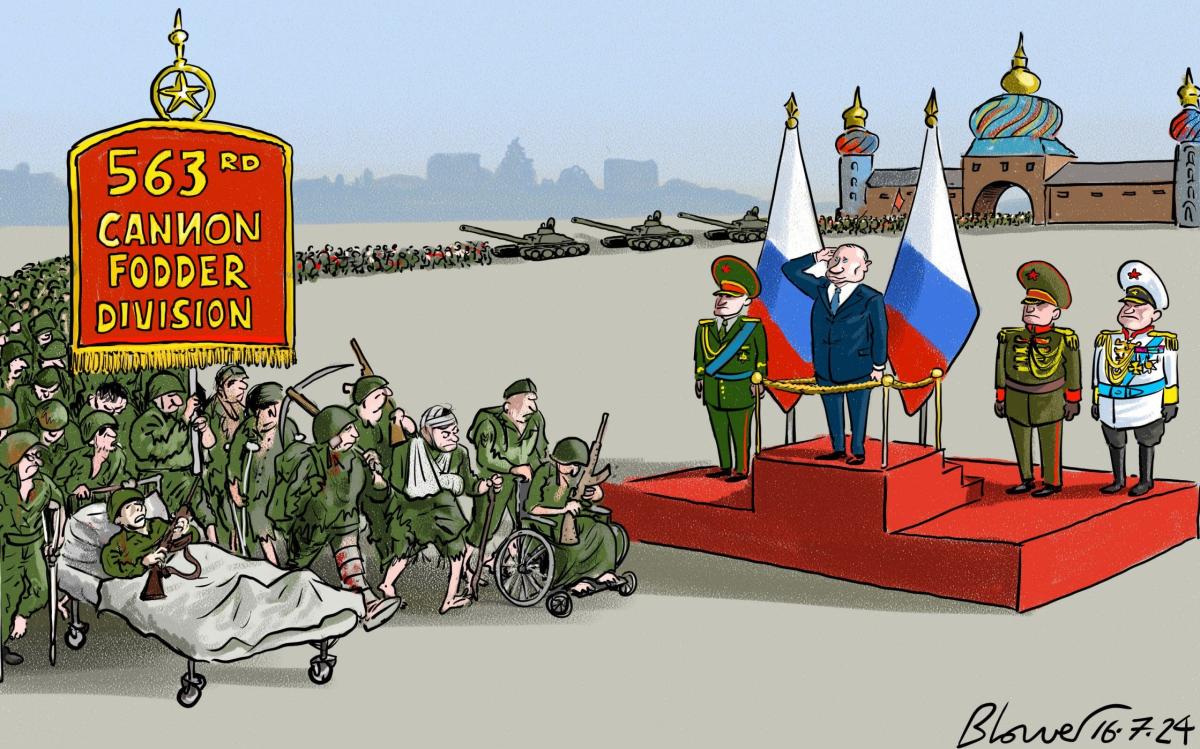
Lies, damned lies, and statistics. If anyone knows how to falsify figures to bolster weak causes, it is the Kremlin.
From Stalin’s manipulation of Soviet productivity statistics during his Five Year Plans, to Khrushchev’s exaggeration in the Cold War of his missile numbers, no entity has proved as effective at fabricating facts to demoralise, unsettle and outmanoeuvre opponents.
Today, in a similar manner, Putin points at Russia’s 144 million citizens and argues, through his propaganda mouthpieces, that it is “impossible” for Kyiv to win his war, given Ukraine’s population is a paltry 37 million.
By this logic, figures released by British intelligence this week – that Russia lost more than 70,000 troops in the past two months, averaging daily conflict highs of 1,262 and 1,163 in May and June – become irrelevant. “Russia can always find more men”, one hears people say, justifying Western inaction.
Except it can’t. Raised on documentaries about the “unstoppable” Russian bear – capable of tearing its way through Eastern Europe, as it did in the Second World War – we forget that this is not possible in modern Russia. Nor is it even desirable for Moscow.
For one, while Putin has conducted several large-scale mobilisations, he remains cautious both in terms of the numbers of men he recruits and where they come from, prioritising conscripting in poorer communities far away from the power centres of Moscow and St Petersburg; often marginalised ethnic minorities. Already, some of these communities have given all they can, with reports of entire generations of men being wiped out in some towns and villages, triggering widespread, if localised (for now), protests.
Moscow’s caution in this regard means it is obliged to empty prisons, exonerating murderers and rapists so they can serve in the Russian army or mercenary outfits like Wagner. Again, this resource is not infinite: numbers are now said to be so low that Moscow is turning to women’s prisons. Given that, by design, women only make up 4 per cent of the Russian army, this is extremely telling.
But these are still relatively minor impediments when considered against broader trends. Russia’s fighting age population, at 14 million, is not gargantuan. With many not eligible or undesirable for recruitment for geographic reasons, the number shrinks further. Many of Russia’s young fled after the full-scale invasion: an estimated 300,000 by mid-March 2022, 500,000 by the end of August, and an additional 400,000 by early October. Estimates put the current number of the departed at over a million.
Then there’s the fact that the full-scale invasion deepened Russia’s demographic crisis. Deaths have outnumbered births in the country since 2000. That – two and half years into the full-scale invasion – as many as 350,000 Russian troops have been killed or wounded is indicative of the scale of the catastrophe.
I could go on. Russia is not as powerful as the Soviet Union: approximately half of the Soviet population came from what today are non-Russian countries – and even then, twice as powerful in numerical terms, it lost its war in Afghanistan in the 1980s. That conflict underscores that army size is only part of the equation.
Indeed, many of the vital components necessary to win wars – like military adaptability and modern tech – work in Kyiv’s favour. That’s before one considers its will to survive as a free nation. And one cannot put a figure on that.
Francis Dearnley is one of the presenters of The Telegraph’s daily podcast ‘Ukraine: The Latest’
EMEA Tribune is not involved in this news article, it is taken from our partners and or from the News Agencies. Copyright and Credit go to the News Agencies, email news@emeatribune.com Follow our WhatsApp verified Channel





